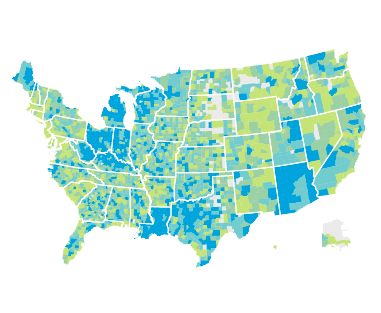请 更新浏览器.
发现
- 去找1Gas spending and the savings associated with gas price declines varied dramatically among U.S. 个人.
- 去找2人 in the South and Midwest spent more on gas and saw larger increases in disposable income when gas prices declined relative to those on the East and West coasts.
- 去找3Savings at the gas pump represented more than 1% of monthly income for low-income 个人 and disproportionately impacted younger Americans.
- 去找4由于油价下跌,个人储蓄的大约80%被花掉了.
下载
The US government projects that American households will save on average $700 this year on gasoline, 随着每加仑汽油的价格下降了近1美元.从最高点的3美元下跌了50美元.2014年4月为70,预计到2015年将保持在低位. 但谁觉得消费能力的增长最大呢? How much of that extra money do 消费者s spend, what do they spend it on?
直到现在, the answer to that question has come from surveys or estimates based on aggregate data and has indicated that less than half of the money saved at the pump was spent. 然而, this report by 澳博官方网站app 研究所 shows that 个人 are spending roughly 80% of that extra money. 低油价预计将持续到今年年底, this extra disposable income is fueling 消费支出 on categories other than gas.
我们的数据, drawn from 57 million 追逐 regular debit and credit card customers illuminated the effects declining gas prices had across the US. 这四个发现包括 天然气支出和储蓄, 地理位置, 年龄及收入水平, 消费支出.
找到一个: Gas spending and the savings associated with gas price declines varied dramatically among U.S. 个人.
Median Americans spent on average $101 per month on gas between December 2013 and February 2014 when gas prices were high. 高-gas spenders (the top 20% of gas spenders) spent $359 per month on gas using their credit and debit cards, 是普通美国人的三倍多, low-gas spenders (the bottom 20% of gas spenders) spent only $2 per month, 不到普通美国人的2%.
一年后, 当油价跌至最低点时, 美国人平均每月节省22美元的油钱, 但个体之间存在显著差异. Twenty-three percent of the population decreased their gas spending by 50% or more, 16%的人将天然气支出增加了50%或更多.
发现二: 人 in the South and Midwest spent more on gas and saw larger increases in disposable income when gas prices declined relative to those on the East and West coasts.
人 in the South and Midwest spent more on gas and saw larger increases in disposable income when gas prices declined relative to those on the East and West coasts. 在中西部和南部, “一揽子国家,” people saw the largest percentage declines in gas prices and gas spending as a fraction of income. 在东方和西方, “lower-impact国家,” people saw smaller drops in gas prices and gas spending as a fraction of income. 最初, people in higher-impact states typically paid lower gas prices and consumed more gas than people in lower-impact states.

发现三: Savings at the gas pump represented more than 1% of monthly income for low-income 个人 and disproportionately impacted younger Americans.
尽管男性的汽油消费最高, 30 - 49岁, 高收入者, 汽油支出占男性收入的比重更大, 18-29 year-olds and low-income earners than for other 个人 as a whole
汽油支出下降导致购买力上升
值得注意的是, the recent low point in gas prices in January of 2015 yielded gas savings that represented 1.低收入人士每月收入的1%,相当于1.6% of monthly income when projecting total gas spending and not just credit and debit card transactions.
Data
From a universe of over 57 million anonymized debit and credit card account holders nationwide, we created samples of 25 million regular card users and 1 million core 追逐 customers.
从5700多万匿名用户中抽取数据, we created samples of 25 million regular debit and credit card holders and 1 million core 追逐 customers to shed new light on the effects of gas price decreases on 消费支出. We examined spending behavior as prices dropped 45% to their recent trough in January 2015 to determine who experienced the biggest increase in spending power, 他们花了多少钱, 他们买了什么. Answers to these questions are good indicators of what we can expect going forward if gas prices remain at these lower levels, 作为预测.
结论
We conclude that people are spending their savings from the pump to a greater extent than previously thought, that the recent gas price declines are fueling growth in personal consumption in nongas categories. This boost to 消费者s spending could be here to stay and even strengthen with time if gas prices remain low or continue to decrease as predicted. On the other hand, a substantial increase in gas prices might proportionately dampen 消费者 spend. We present evidence that the gains in discretionary spending from lower gas prices disproportionately accrue to low-income 个人, 年轻人, 以及中西部和南部, 哪里的人倾向于在汽油上花更多的钱. These regional and demographic differences are important inputs as policy makers consider gas tax reforms. Notwithstanding the environmental and infrastructure impacts from increased gas consumption, 天然气价格下跌对美国经济来说是个好消息.S. 消费者.


